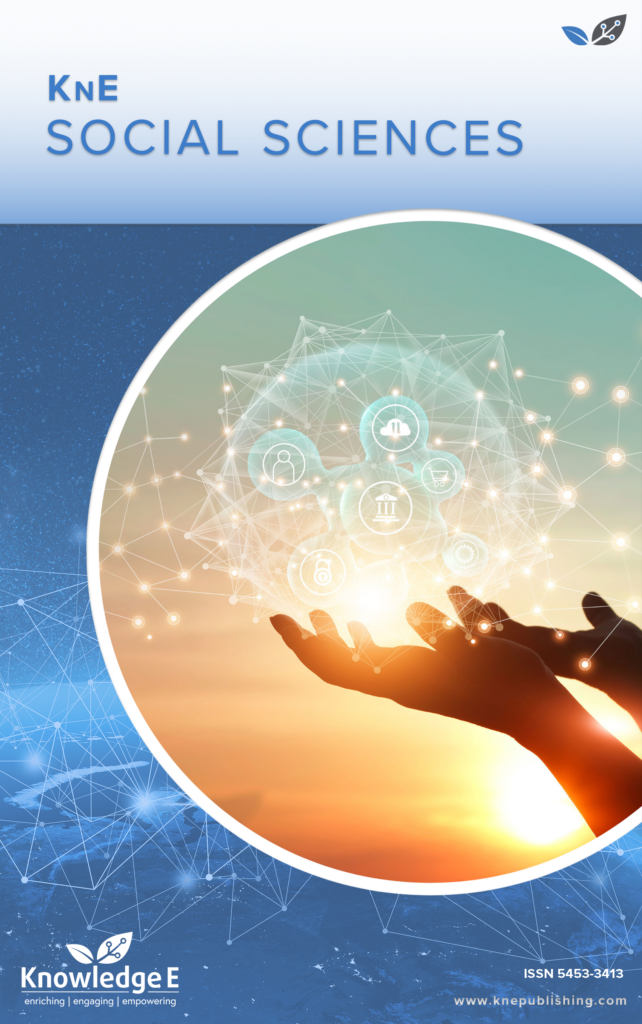
KnE Social Sciences
ISSN: 2518-668X
The latest conference proceedings on humanities, arts and social sciences.
What Determinants of Academic Fraud Behavior? From Fraud Triangle to Fraud Pentagon Perspective
Published date: Oct 22 2018
Journal Title: KnE Social Sciences
Issue title: International Conference on Economics, Business and Economic Education 2018 (ICE-BEES 2018)
Pages: 154–167
Authors:
Abstract:
This study aims to investigate the determinants of academic fraud behavior in the perspective of fraud triangle, fraud diamond, and fraud pentagon. Research method of this study is quantitative study to analyze the determinants of academic fraud behavior. The population of this study is students majoring in economics education of Faculty of Economics Universitas Negeri Semarang (UNNES) who are actively study during the first semester of 2017/2018 academic year. Data is collected using questionnaire. The data is analyzed by descriptive statistic and multiple linear regression. The results show that academic fraud behavior by economics education students of Faculty of Economics (UNNES) is in the low category. Plagiarism and wrong cooperation are the mostly executed of academic fraud behavior than other indicators. This study successfully explains the concepts of fraud triangle, there are pressure, opportunity and rationalization which positively and significantly affect students’ academic fraud behavior. Nevertheless, this study fails to verify the concept of fraud diamond and fraud pentagon. Capability, arrogance and external do not affect students’ academic fraud behavior. This paper use three concept of fraud to investigate the determinants of academic fraud behavior.
Keywords: academic fraud, fraud triangle, fraud diamond, fraud pentagon
References:
[1] Abdullahi, R., & Mansor, N. (2015). Fraud Triangle Theory and Fraud Diamond Theory; Understanding the Convergent and Divergent For Future Research. International Journal of Academic Research in Accounting, Finance and Management Sciences, 5(4), 38–45. http://doi.org/10.6007/IJARAFMS/v5-3/1823
[2] Abdullahi, R., Mansor, N., & Nuhu, M. S. (2015). Fraud Triangle Theory and Fraud Diamond Theory: Understanding the Convergent and Divergent for Future. European Journal of Business and Management, 7(28), 30–37.
[3] Apriani, N., Sujana, E., & Sulindawati, I. G. E. (2017). Pengaruh Pressure, Opportunity, dan Rationalization terhadap Perilaku Kecurangan Akademik (Studi Empiris: Mahasiswa Akuntansi Program S1 Universitas Pendidikan Ganesha). E-Journal S1 Ak Universitas Pendidikan Ganesha, 7(1), 1–12.
[4] Aprilia. (2017). The Analysis of the Effect of Fraud Pentagon on Financial Statement Fraud Using Beneish Model in Companies Applying the ASEAN Corporate Governance Scorecard. Jurnal Akuntansi Riset, 6(1), 96–126.
[5] Crowe, H. (2011). Why the Fraud Triangle is No Longer Enough. Retrieved from www. crowehorwath.com
[6] Fitriana, A., & Baridwan, Z. (2012). Perilaku Kecurangan Akademik Mahasiswa Akuntansi; Dimensi Fraud Triangle. Jurnal Akuntansi Multiparadigma, 3(2), 242–254.
[7] Fuadi, M. (2016). Determinan Kecurangan Akademik pada Mahasiswa Fakultas Ekonomi Universitas Negeri Semarang dengan Konsep Fraud Triangle. Universitas Negeri Semarang.
[8] G Tessa, C., & Harto, P. (2016). Fraudulent Financial Reporting: Pengujian Teori Fraud Pentagon pada Sektor Keuangan dan Perbankan di Indonesia. In Simposium Nasional Akuntansi XIX (pp. 1–21). Lampung: Universitas Lampung.
[9] Kusumantoro, Nurkhin, A., Mukhibad, H., & Kiswanto. (2016). Determinants of Fraud Based on Islamic Paradigm: Case Study in Islamic Financial Services Cooperatives. International Journal of the Computer, the Internet and Management, 24(3), 68–71.
[10] Manurung, D. T. H., & Hardika, A. L. (2015). Analysis of factors that influence financial statement fraud in the perspective fraud diamond: Empirical study on banking companies listed on the Indonesia Stock Exchange year 2012 to 2014. In the International Conference on Accoungting Studies (ICAS) 2015 (pp. 279–286). Johor, Malaysia: Universiti Utara Malaysia.
[11] Muhsin, Kardoyo, Arief, S., Nurkhin, A., & Pramusinto, H. (2018). An Analyis of Student ’ s Academic Fraud Behavior. In Advances in Social Science, Education and Humanities Research (Vol. 164, pp. 34–38).
[12] Nursani, R., & Irianto, G. (2013). Perilaku Kecurangan Akademik Mahasiswa: Dimensi Fraud Diamond. Jurnal Ilmiah Mahasiswa FEB UB, 2(2), 1–21.
[13] Pamungkas, D. D. (2015). Pengaruh Faktor-faktor dalam Dimensi Fraud Triangle terhadap Perilaku Kecurangan Akademik Siswa Kelas XI Akuntansi SMK Negeri 1 Tempel Tahun Ajaran 2014/2015. Universitas Negeri Yogyakarta.
[14] Pratama, R. Y. S. (2017). Analisis Dimensi Fraud Diamond dan GONE Theory terhadap Academic Fraud (Studi Kasus Mahasiswa Akuntansi Fakultas Ekonomi dan Bisnis Universitas Muhammadiyah Surakarta).
[15] Purnamasari, D., & Irianto, G. (2013). Analisis Pengaruh Dimensi Fraud Triangle terhadap Perilaku Kecurangan Akademik Mahasiswa pada Saat Ujian dan Metode Pencegahannya. Jurnal Ilmiah Mahasiswa FEB UB, 2(2), 1–25.
[16] Ruankaew, T. (2016). Beyond the Fraud Diamond. International Journal of Business Management and Economic Research (IJBMER), 7(1), 474–476.
[17] Saidina, D. A., Nurhidayati, H., & Mawardi, M. C. (2017). Faktor-faktor yang Mempengaruhi Perilaku Kecurangan Akademik dalam Perspektif Fraud Triangle pada Mahasiswa Akuntansi Universitas Islam Malang. Jurnal Riset Akuntansi, 6(1), 1–14.
[18] Sorunke, O. A. (2016). Personal Ethics and Fraudster Motivation: The Missing Link in Fraud Triangle and Fraud Diamond Theories. International Journal of Academic Research in Business and Social Sciences, 6(2), 159–165. http://doi.org/10.6007/ IJARBSS/v6-i2/2020
[19] Tugas, F. C. (2012). Exploring a new element of fraud: A study on selected financial accounting fraud cases in the world. American International Journal of Contemporary Research, 2(6), 112–121. Retrieved from http://www.aijcrnet.com/ journals/Vol_2_No_6_June_2012/14.pdf
[20] Wolfe, B. D. T., & Hermanson, D. R. (2004). The Fraud Diamond: Considering the Four Elements of Fraud. The CPA Journal, 2(Decembe), 38–42.
[21] Yusof, K. M. (2016). Fraudulent Financial Reporting: An Application of Fraud Models to Malaysian Public Listed Companies. University of Hull.
[22] Zaini, M., Carolina, A., & Setiawan, A. R. (2015). Analisis Pengaruh Fraud Diamond dan Gone Theory Terhadap Academic Fraud (Studi Kasus Mahasiswa Akuntansi SeMadura). In Simposium Nasional Akuntansi XVIII (pp. 1–20). Medan: FEB Universitas Sumatera Utara.
